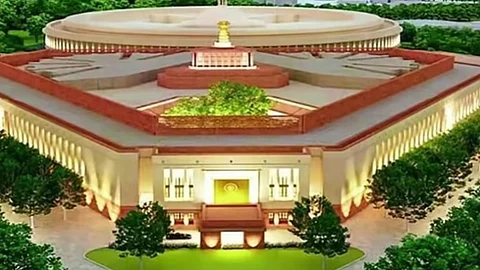

The government implements various schemes to improve access to nutritious food. National Food Security Act (NFSA) 2013, provides highly subsidised food grains under Targeted Public Distribution System for coverage up to 75 per cent of the rural population and up to 50 per cent of the urban population.
Free food grains are provided to 806.7 million beneficiaries of Antyodaya Anna Yojana households and Priority Households under Pradhan Mantri Garib Kalyan Anna Yojana, Anupriya Patel, Minister of State in the Union Ministry of Health and Family Welfare told the Rajya Sabha on December 17, 2024.
The minister made this statement in response to a question regarding data from a report by the Centre for Science and Environment and Down To Earth magazine. According to the report, 71 per cent of Indians cannot afford a nutritious meal, and over 1.7 million people die annually due to diseases linked to poor diets."
The National Sickle Cell Anaemia Elimination Mission (NSCAEM) aims to achieve targeted screening of 70 million people for sickle cell disease in the age group of 0-40 years till 2025-26, Patel told the Rajya Sabha.
The average monthly income per agricultural household in the rural areas of India, with reference to the agricultural year July 2018-June 2019, is estimated at Rs 10,218.
This is as per the 77th round of the National Sample Survey (January-December 2019), Union Minister of Agriculture and Farmers Welfare Shivraj Singh Chouhan told the Lok Sabha.
The extent of average monthly income per agricultural household during 2023 and 2024 is not available since the last survey was conducted in 2019, he added.
A total of 2,429 dumpsites with 235.7 million Metric Ton (MT) of waste have been identified for remediation, as per data uploaded by the state / Union territory governments. These collectively occupy 6,022 hectares of land.
Some 659 dumpsites have been remediated completely and work in 1,176 sites is under progress as on December 12, 2024, Chouhan said.
A cumulative of 114 million MT (48 per cent) of waste has been remediated and 2,433 hectares (40 per cent) land has been reclaimed, he added.
Some 87,855 hectares of cropped area was affected to the extent of 33 per cent and above due to Cyclone ‘Dana’ as per the information received from the Government of Odisha, Ramnath Thakur, Minister of State for Agriculture and Farmers Welfare told the Lok Sabha.
The Centre and state governments have appointed 11,287 insecticide inspectors to ensure the availability of quality pesticides and check the sale of banned pesticides.
Some 80,789 pesticide samples were analysed in pesticide testing laboratories during 2023-24, of which 2,222 samples (2.7 per cent of the total) were found to be substandard.
However, no banned pesticides were found in these samples, Thakur told the Lok Sabha.
The Government of India is promoting organic farming through the schemes Paramparagat Krishi Vikas Yojana (PKVY) and its sub scheme Bhartiya Prakratik Krishi Paddhati (BPKP) and Mission Organic Value Chain Development for North Eastern Region (MOVCDNER).
BPKP has now been up scaled to National Mission on Natural Farming which was approved by the Union Cabinet on November 25, 2024.
The total number of farmers under PKVY, MOVCDNER, and BPKP is 1.937 million,189,000 and 215,000 respectively, Thakur told the Lok Sabha.
Production Linked Incentive (PLI) Schemes for 14 key sectors have been announced with an outlay of Rs. 1.97 lakh crore (over US$26 billion) to enhance India’s manufacturing capabilities and exports.
PLI Scheme for High Efficiency Solar PV Modules is under gestation period. Hence, no funds have been disbursed till date, Jitin Prasada, Minister of State in the Ministry of Commerce & Industry told the Lok Sabha.
An investment of around Rs 35,000 crore has been made under the scheme as on October 31, 2024, generating direct employment for around 10,000 persons and indirect employment for around 22,500 persons, the minister added.